Last Updated on October 16, 2023
If you’re looking to build a custom mechanical keyboard with the Tofu65 aluminum case, you’re in for a treat. The Tofu65 case, with its sleek design and high-quality aluminum construction, is a popular choice among keyboard enthusiasts. To make the most of your Tofu65 build, it’s essential to choose the right PCB (Printed Circuit Board). In this article, we’ll explore the best PCBs for Tofu65 keyboard, tailored to meet your specific needs and preferences.
1. DZ65RGB V3 HOT-SWAP RGB PCB
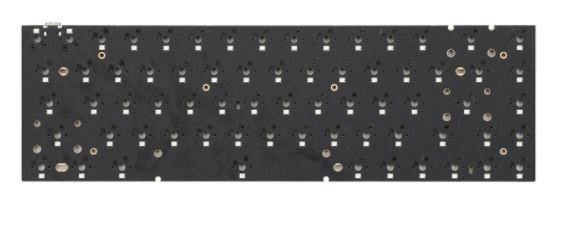
The DZ65RGB V3 Hot-Swap RGB PCB is an outstanding choice for your Tofu65 aluminum case. This PCB offers a hot-swappable design, which means you can easily switch out switches without the need to solder each one individually. This feature is a game-changer for those who like to experiment with different switches or want to change the feel of their keyboard without the hassle of soldering and desoldering.
The per-key RGB lighting on top of the PCB allows for unique lighting effects on each key, adding a touch of customization to your keyboard. However, it’s worth noting that this PCB doesn’t have RGB underglow, which some users may prefer.
The Type-C interface is a modern and convenient feature that simplifies the keyboard-to-computer connection. Additionally, the Cherry screw-in stabilizers provide a stable and consistent typing experience.
One of the standout features of the DZ65RGB V3 PCB is its compatibility with the VIA software, which makes customizing key bindings and lighting effects a breeze. It also supports the QMK firmware, a popular open-source firmware that offers even more customization options.
In summary, the DZ65RGB V3 Hot-Swap RGB PCB is a top-tier choice for those aiming to build a high-quality and customizable keyboard with the Tofu65 aluminum case. Despite being manufactured in China, the quality and features of this PCB make it a great option for keyboard enthusiasts.
2. KBD67 REV2
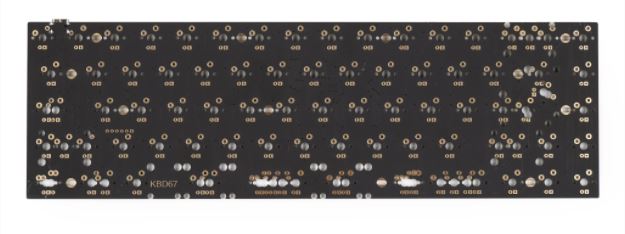
The KBD67 REV2 65% PCB is a fantastic option for your custom keyboard, especially if you plan to use it with the Tofu65% keyboard case. This PCB offers a variety of features that cater to the needs of keyboard enthusiasts.
One of its most significant advantages is VIA support. VIA is a popular firmware that makes customizing keyboard layouts, macros, and more a breeze. This means you can easily tailor your keyboard to your specific needs, making the KBD67 REV2 65% PCB an extremely versatile option.
The 65% layout is another great feature of the KBD67 REV2 PCB. It’s compact enough to save desk space while still providing all the necessary keys for comfortable typing, making it ideal for those who prefer a minimalist setup.
The inclusion of a Type-C USB port ensures modern and convenient connectivity to a wide range of devices. Additionally, the KBD67 REV2 65% PCB supports backlight LED, adding an extra layer of customization to your keyboard.
It’s worth noting that this PCB is not compatible with the KBD67 Lite keyboard case, but it works perfectly with the TOFU65% keyboard case.
In conclusion, the KBD67 REV2 65% PCB is an outstanding choice for anyone looking to build a custom keyboard. With VIA support, a compact 65% layout, Type-C USB, and backlight LED compatibility, it offers versatility and convenience for keyboard enthusiasts.
3. KBD67 MARK II RGB V3 HOT-SWAP PCB
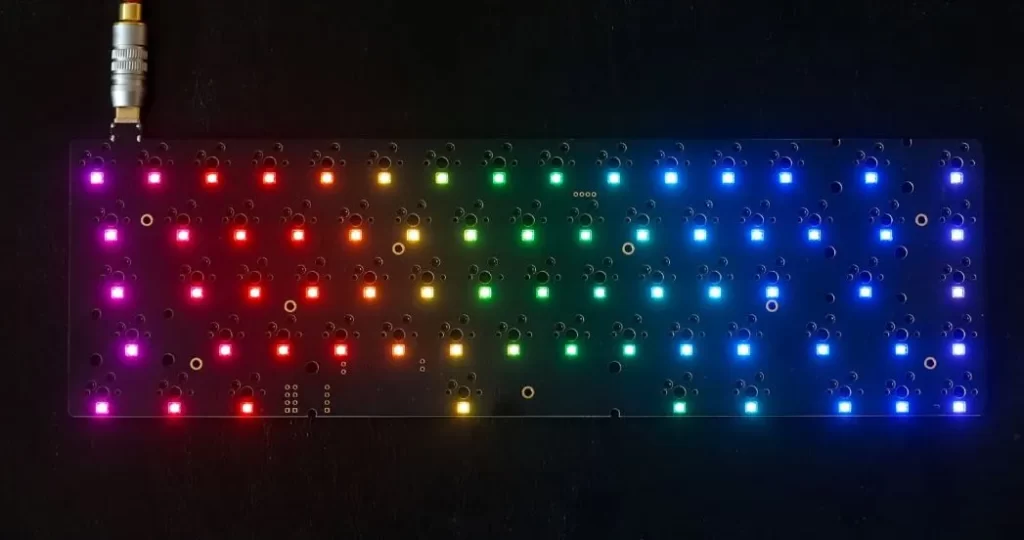
The KBD67 MARK II RGB V3 HOT-SWAP PCB stands as one of the best PCBs available for the Tofu65 mechanical keyboard. This PCB offers a wide range of features and specifications that cater to the desires of anyone building their custom mechanical keyboard.
One of the standout features of this PCB is its compatibility with various cases. The KBD67 MARK II RGB V3 HOT-SWAP PCB works seamlessly with KBD67MarK II, KBD67 lite, Blade65, D65, and KBD67v3 aluminum cases, giving you flexibility when choosing the case for your keyboard build.
Another impressive feature is its support for both 3-pin and 5-pin Cherry MX-style switches, offering a wide array of customization options for your keyboard.
The per-key RGB lighting on the top of the PCB, while lacking RGB underglow, creates a visually stunning effect for your keyboard.
Additionally, this PCB supports the VIA firmware, which simplifies customization and configuration. The VIA firmware is beginner-friendly and offers a broad range of customization options, suitable for both novices and experienced keyboard enthusiasts.
In summary, the KBD67 MARK II RGB V3 HOT-SWAP PCB is an excellent choice for building a custom mechanical keyboard. With compatibility with various cases, support for both 3-pin and 5-pin switches, and per-key RGB lighting, this PCB offers flexibility and customization. The VIA firmware support ensures ease of configuration and customization to suit your preferences.
4. TADA68 PCB
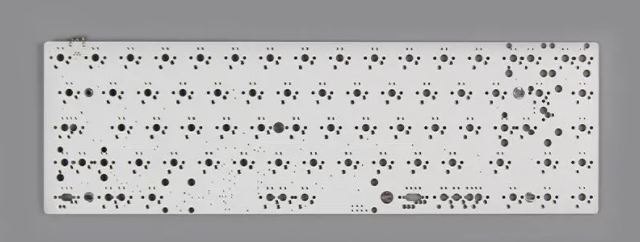
The TADA68 PCB is a highly regarded printed circuit board (PCB) and is often praised as one of the best PCBs for the Tofu65 keyboard. It’s the official PCB used in all TADA68 keyboards, a testament to its quality and reliability.
One of the standout features of the TADA68 PCB is its LED support, allowing users to customize their keyboard’s lighting to their liking, a feature highly appreciated by enthusiasts. Additionally, the PCB is programmable, enabling users to assign custom key mappings and macros to their keyboard.
The TADA68 PCB is a 68% size, slightly smaller than a standard tenkeyless keyboard, making it more compact and portable, a key reason for its popularity among enthusiasts.
Designed to work with MX mount switches, one of the most popular switch types on the market, the TADA68 PCB ensures compatibility with a wide range of switches, offering users more options for customizing their keyboard.
The TADA68 PCB is the result of a collaboration between KBDFans and the TADA team. KBDFans is a well-known vendor in the mechanical keyboard community, known for producing high-quality products, which further enhances the PCB’s reputation for quality.
In conclusion, the TADA68 PCB is a fantastic option for anyone looking to build a Tofu65 keyboard or customize their existing TADA68 keyboard. Its LED support, programmability, and compatibility with MX mount switches make it a versatile and highly customizable choice.
Factors to Consider When Choosing a PCB for Your Tofu65 Keyboard
When selecting a printed circuit board (PCB) for your Tofu65 keyboard, it’s essential to take several factors into account to ensure that your custom mechanical keyboard meets your specific needs and preferences. Here are some key considerations:
1. Size and Compatibility
The size and compatibility of the PCB are fundamental factors. Ensure that the PCB matches the Tofu65 keyboard’s size and layout. Compatibility includes the fit with the keyboard case, keycap layout, and switch spacing. A PCB that fits seamlessly into your Tofu65 case is essential for a successful build.
2. Programmability
Programmability is a significant feature to consider. A programmable PCB allows you to customize the key layout and functions of your Tofu65 keyboard. This feature offers versatility, enabling you to tailor your keyboard to your specific needs, whether for gaming, typing, or any other purpose.
3. Hot-Swappable or Soldered
Determine whether you prefer a hot-swappable or soldered PCB. Hot-swappable PCBs make it easy to switch out switches without the need for soldering, allowing for quick and hassle-free customization. Soldered PCBs, on the other hand, provide a more permanent and stable option but require soldering skills for modifications.
4. RGB Lighting and Effects
If you want to add a touch of personalization and aesthetics to your Tofu65 keyboard, consider a PCB with RGB lighting and effects. Ensure that the RGB lighting is compatible with the Tofu65 keyboard case to create visually stunning lighting patterns. Customizable RGB lighting can enhance your keyboard’s overall look and feel.
5. Build Quality
The quality of the PCB can significantly impact the performance and durability of your Tofu65 keyboard. Look for a PCB made from high-quality materials with sturdy soldering points to ensure long-lasting and reliable performance. A well-constructed PCB will contribute to the overall durability of your keyboard.
6. Additional Features
Consider any additional features that can enhance your Tofu65 keyboard. Features like USB-C ports or Bluetooth connectivity can add functionality and convenience to your keyboard, making it easier to connect to various devices or switch between them.
7. Brand Reputation
Choose a PCB from a reputable brand with a track record of producing high-quality PCBs. A reputable brand is more likely to offer well-tested and reliable products that meet the demands of keyboard enthusiasts. Reading reviews and seeking recommendations from the keyboard community can help you identify trusted brands.
In conclusion, selecting the right PCB for your Tofu65 keyboard is a crucial step in building a customized mechanical keyboard that suits your needs and preferences. Carefully consider these factors to ensure that the PCB you choose aligns with your desired keyboard layout, functionality, and aesthetic preferences.
How to Install a PCB in Your Tofu65 Keyboard
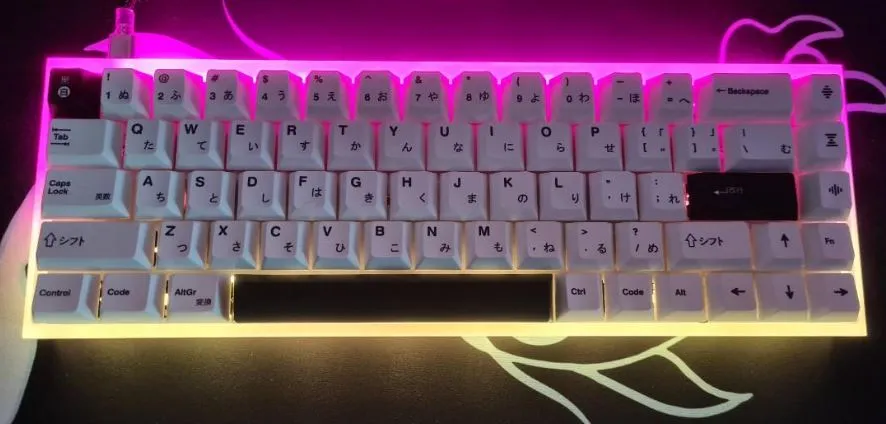
Installing a PCB (Printed Circuit Board) in your Tofu65 keyboard is a straightforward process that requires a few essential tools and careful attention to detail. Follow these step-by-step instructions to successfully install a PCB in your Tofu65 keyboard:
Step 1: Gather All Necessary Tools
Before you begin, ensure you have the following tools at hand:
- Phillips head screwdriver
- Pair of tweezers
- Tofu65 case and PCB
Having these tools ready will make the installation process smoother and more efficient.
Step 2: Open the Tofu65 Case
- Flip the Tofu65 case upside down to access the bottom.
- Using the Phillips head screwdriver, carefully remove the screws securing the two halves of the case together. Ensure that you keep the screws in a safe place for reassembly.
- Once the screws are removed, gently lift the top half of the case off to expose the PCB. Set the top half of the case aside.
Step 3: Prepare the PCB
If your PCB does not already have switches soldered onto it, you will need to solder them onto the PCB. Follow these steps for soldering:
- Ensure that you have the appropriate switches for your keyboard.
- Align the switches correctly with the corresponding holes on the PCB.
- Carefully solder each switch to the PCB using a soldering iron and solder. Be sure to create a secure and reliable connection.
- If your keyboard design includes LEDs or diodes and they are not pre-installed on the PCB, solder them in place as needed.
Step 4: Insert the Switches
With the switches now soldered onto the PCB, proceed to insert them into the corresponding slots on the keyboard case:
- Use the pair of tweezers to pick up each switch.
- Place the switches into their designated slots on the keyboard case.
- Press down firmly on each switch to ensure it is securely in place. Properly seated switches are essential for smooth and responsive key presses.
Step 5: Screw the Case Back Together
With all switches securely in place, you can now reassemble the Tofu65 case:
- Align the top half of the case with the bottom half, ensuring all switches fit into their corresponding slots.
- Use the Phillips head screwdriver to reattach the screws that hold the case together. Tighten the screws evenly to ensure a snug fit.
Step 6: Test the Keyboard
Before completing the installation, it’s crucial to test your Tofu65 keyboard to ensure that all keys are functioning correctly:
- Connect the Tofu65 to your computer using a USB cable.
- Open a text editor or keyboard testing software.
- Test each key to make sure they register properly. Press each key and verify that the corresponding character or action is recognized.
Congratulations! If all keys are working as expected, you have successfully installed a PCB in your Tofu65 keyboard. Your custom keyboard is now ready for use and can provide a unique typing experience tailored to your preferences.
Conclusion
In summary, selecting the right PCB for your Tofu65 keyboard build is crucial for achieving the desired level of customization and performance. Each of the PCBs discussed here has its unique features and advantages, catering to different preferences and requirements. Whether you prioritize hot-swappability, VIA support, or LED customization, you can find the perfect PCB to complement your Tofu65 keyboard.
Kizaru is a fan, collector, and has a huge addiction to mechanical keyboards. Kizaru has a collection of dozens of mechanical keyboards that come in different sizes and use different switches. He also frequently contributes to various forums that discuss keyboards such as Reddit and GeekHack.

